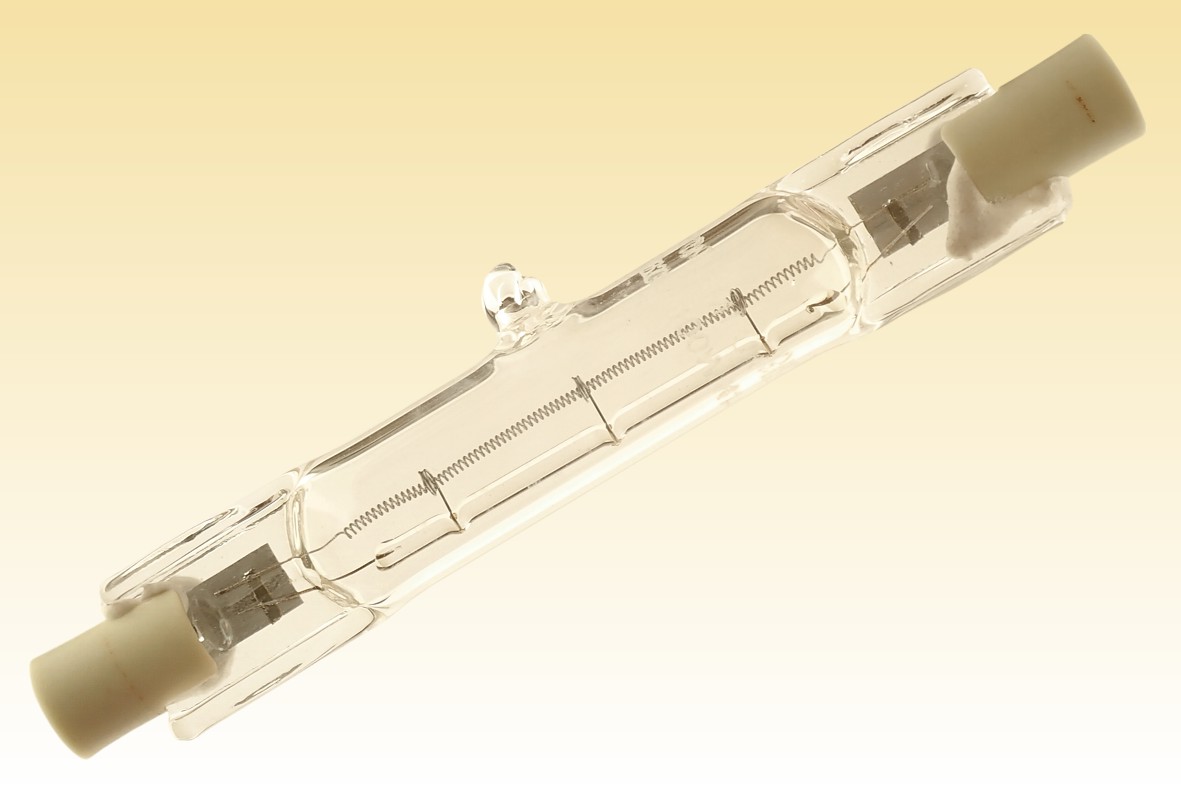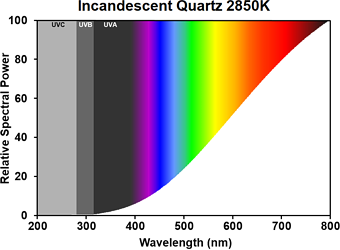
|
Thorn Linear Halogen with Quartz Spine - K/14 100W |

Both of these problems were solved in a particularly elegant fashion, by Alex Halberstadt of Thorn Lighting in 1979. He was first to conceive the quartz spine construction, in which a narrow diameter quartz cane is sealed into the lamp alongside the filament. This bears a number of looped tungsten wires which support the filament without distorting it, the spine being supported itself by a pair of wires welded to the moly foils in the pinch-seals. This innovation resulted not only in Thorn being first to introduce the 200W, 150W and 100W linear halogen lamps, but also first with this smallest version that introduced the 78.3mm standard.
Another challenge with low current halogen lamps was short life arising from bromine attack of the colder filament tails. Thorn achieved a remarkable 4000 hour life by plugging the ends of the filament tails with a solid tungsten wire where they enter the pinch, to increase their strength. In parallel the halogen chemistry was changed to a novel bromine-iodine mixture to reduce the rate of the halogen cycle - note the feint purple hue of iodine vapour in the detail photo.




| Manufacturer: | Thorn EMI | |
| Lamp Power: | 100 Watts | |
| Lamp Voltage: | 240-250 Volts | |
| Lamp Current: | 4.41 Amperes | |
| Cap Type: | R7s | Silver plated contacts |
| Bulb Type: | T-10.5 | T-3 in eighths/inch |
| Bulb Finish: | Clear | |
| Filament Type: | CC-8 | Coiled-Coil Axial |
| Lighted Length: | mm | Inches |
| Atmosphere: | Krypton-Halogen | CHI3 + PNBr2 |
| Luminous Flux: | 1350 lumens | |
| Luminous Efficacy: | 13.5 lm/W | |
| Luminous Intensity: | N/A | |
| Beam Distribution: | N/A | |
| Colour Temperature & CRI: | CCT: 2850K | Ra: 100 |
| Chromaticity Co-ordinates: | CCx: 0.444 | CCy: 0.406 |
| Lifetime: | 4000 hours | |
| Burning Position: | Universal | |
| Insertion Length: | 78.3mm | 3.08 Inches |
| Factory: | Enfield, London | United Kingdom |
| Date of Manufacture: | 1989 April | Date Code: 9D |
| Original Value: | GB £5.78 (1988) | |

